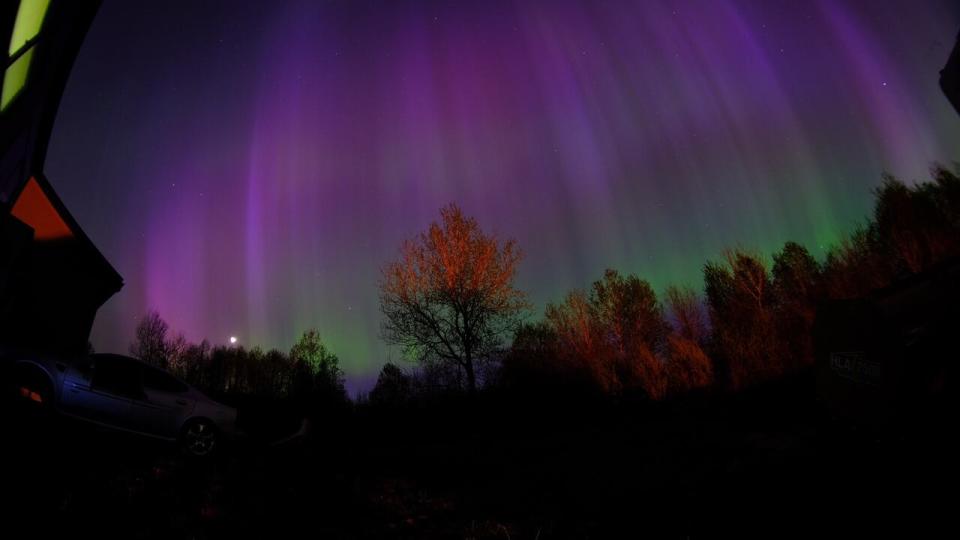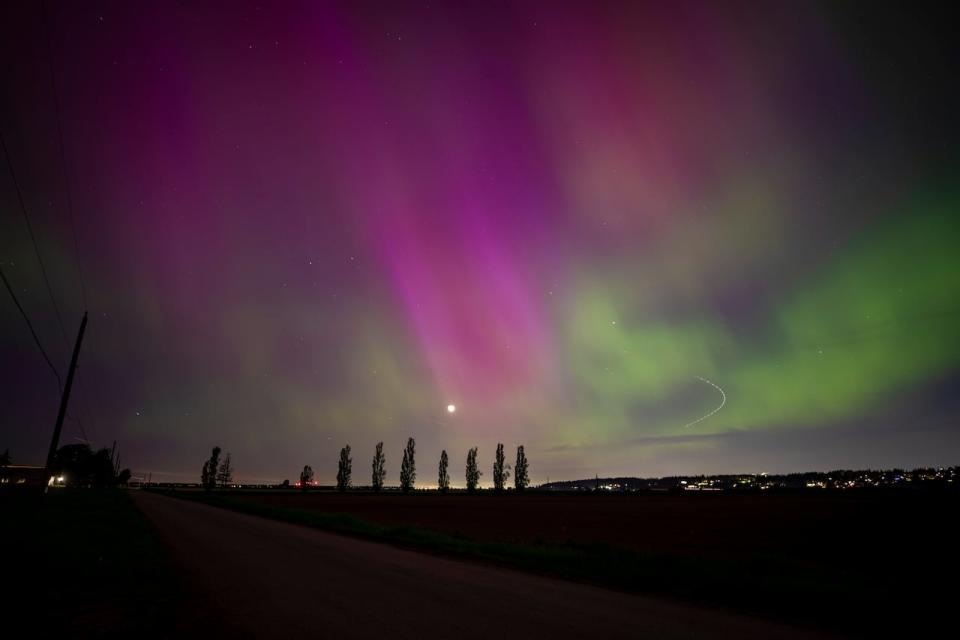Why are the northern lights sometimes pink?
Stream Good Question, Saskatchewan on CBC Listen or wherever you get your podcasts.
If someone asked you to draw a picture of the northern lights, what colour crayon would you reach for?
"They probably start with green," said Daniel Billett, a postdoctoral fellow in space physics at the University of Saskatchewan.
Billett said green is the most commonly seen colour in the aurora borealis.
But Cindy Sherban and her family were wondering why hues of pink and purple will sometimes dance across the sky.
"My mom said when she was a kid growing up in Saskatoon in the '30s and 40s 'that she remembers them as red, magenta, purple," Sherban said. "It wasn't until decades later she saw green ones."
Sherban asked the CBC podcast Good Question, Saskatchewan what causes the colours to change.
"Why might it be happening? Is it pollution? Climate change? What's up?"
Billet said the short answer is that the colours haven't actually changed.
"It's much higher than the layers of the atmosphere that we consider related to climate change. So it's got nothing to do with climate change or pollution," he said.
"What does change over longer periods of time is the solar cycle and how active the sun is."
Billet said we are at the peak of an 11-year solar cycle, which means we are more likely to see the aurora borealis now than at any other time in the last few years.
During a tremendously large geomagnetic storm in May, many who took in the show reported seeing some pink hues, which are rare.

Billet describes the aurora as large, extremely tall curtains. They can stretch several hundred kilometres. The colours you see depend on the angle you are looking from.
"If the aurora is directly over you, then suddenly you're not seeing the curtain, you're just seeing directly at the bottom of it. And right at the bottom is magenta," said Billett.
"But if you then see it from the side — if you can see the full curtain — then you're more likely to see green because you're basically seeing the big altitude range, between 100 to 200 kilometres, where oxygen is the dominant light emitter. And then that gives off green, and then higher altitudes red.
"When you see the aurora and you learn about the connection … it's because of stuff happening in space, right? Which is crazy to think about."

Saskatchewan is a prime viewing spot for the aurora borealis because of our geomagnetic position and our sparse population, which tends to result in less light pollution, Billett said.
Sherban said she thinks people should take more time to appreciate the light shows we get in the province.
"It really is something special that we don't often give enough thought or gratitude to in our part of the country," said Sherban.


